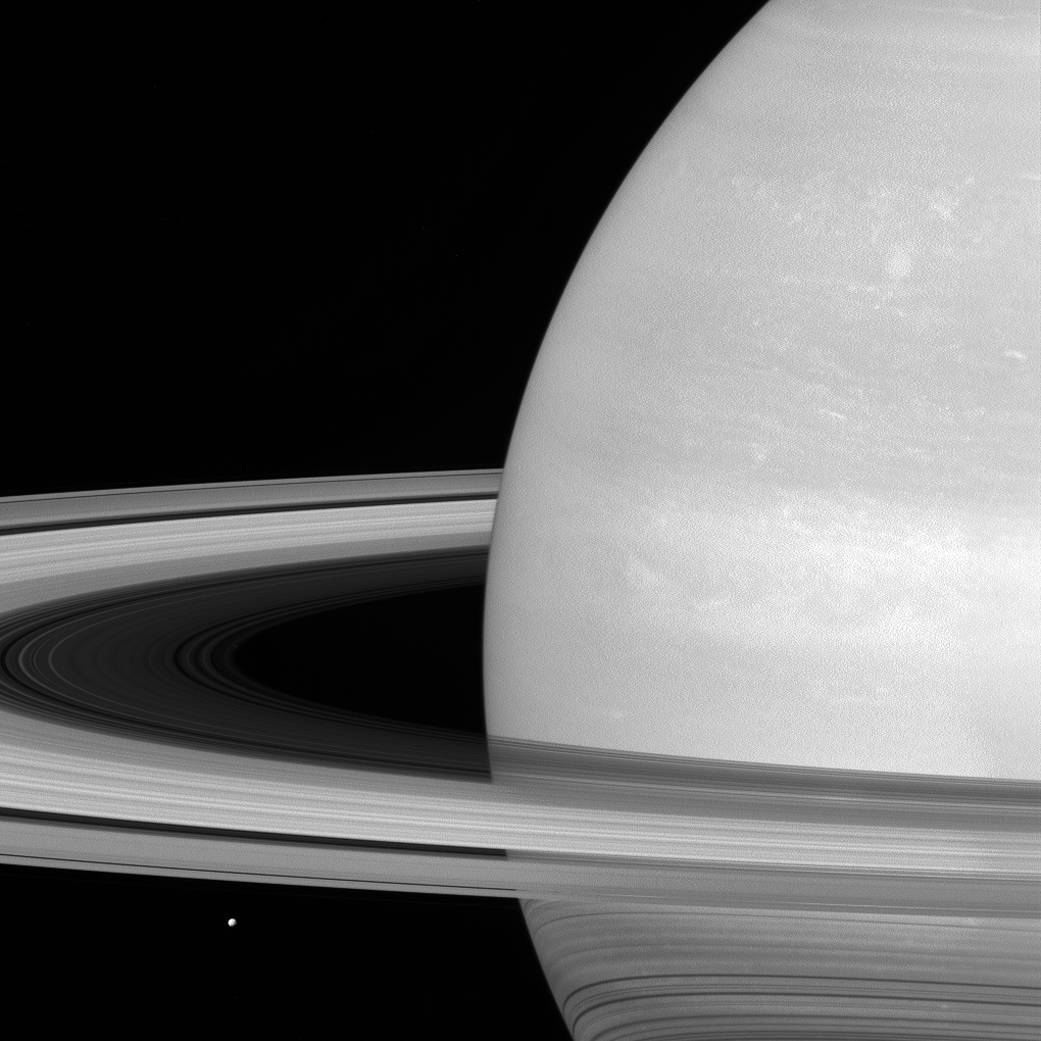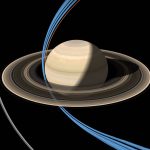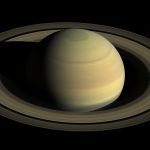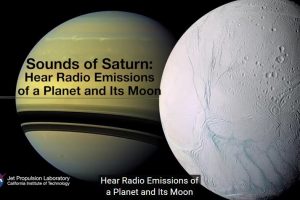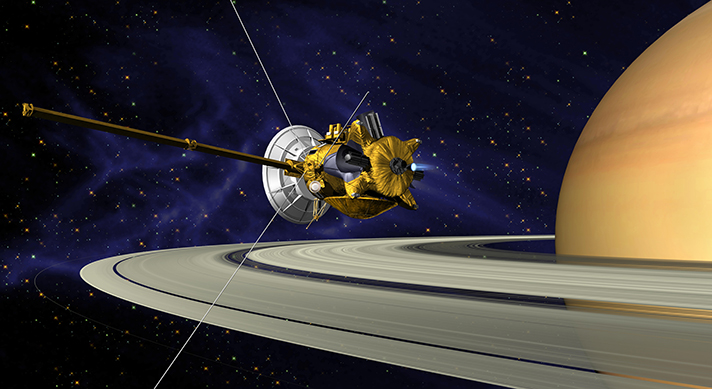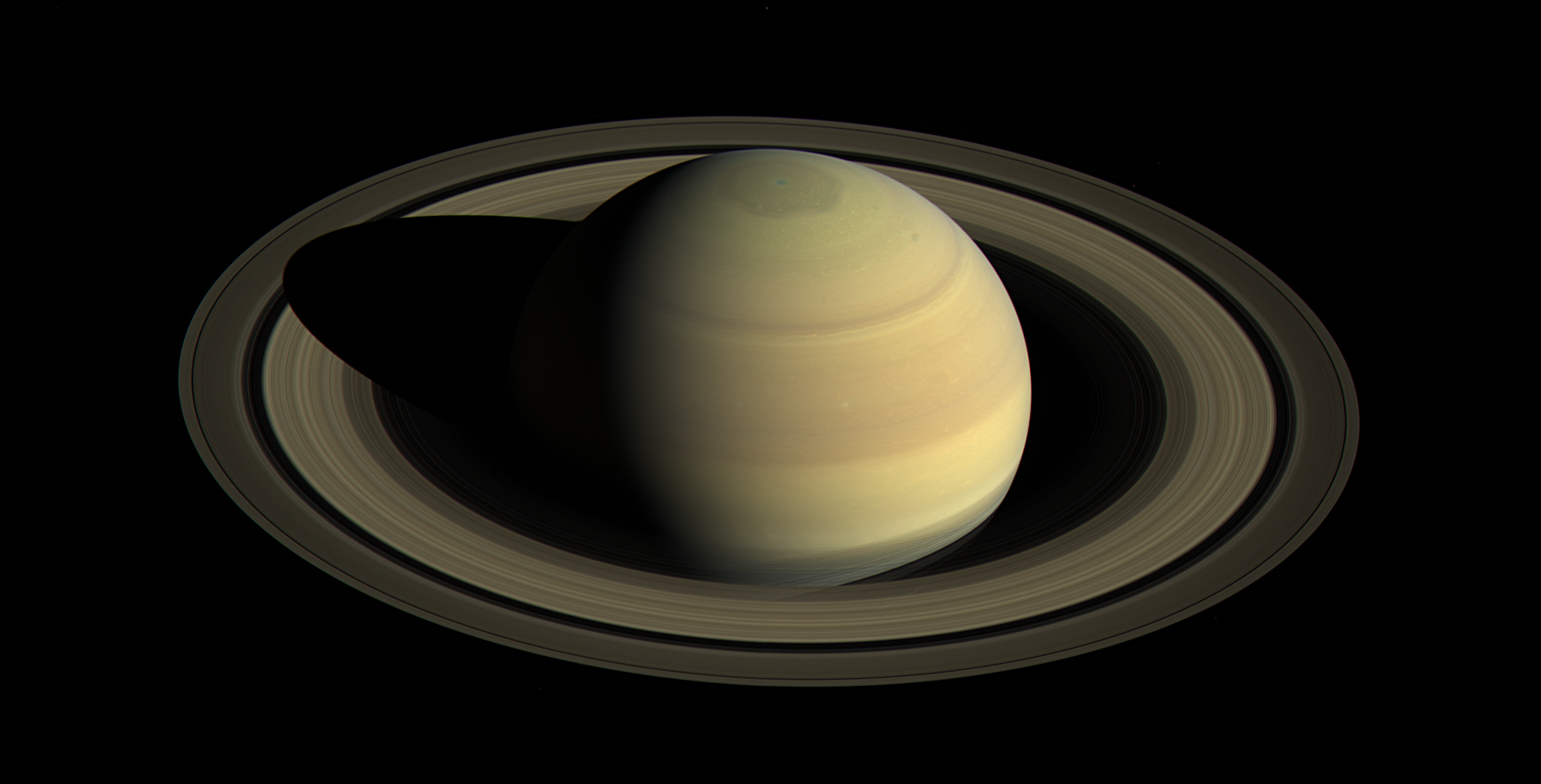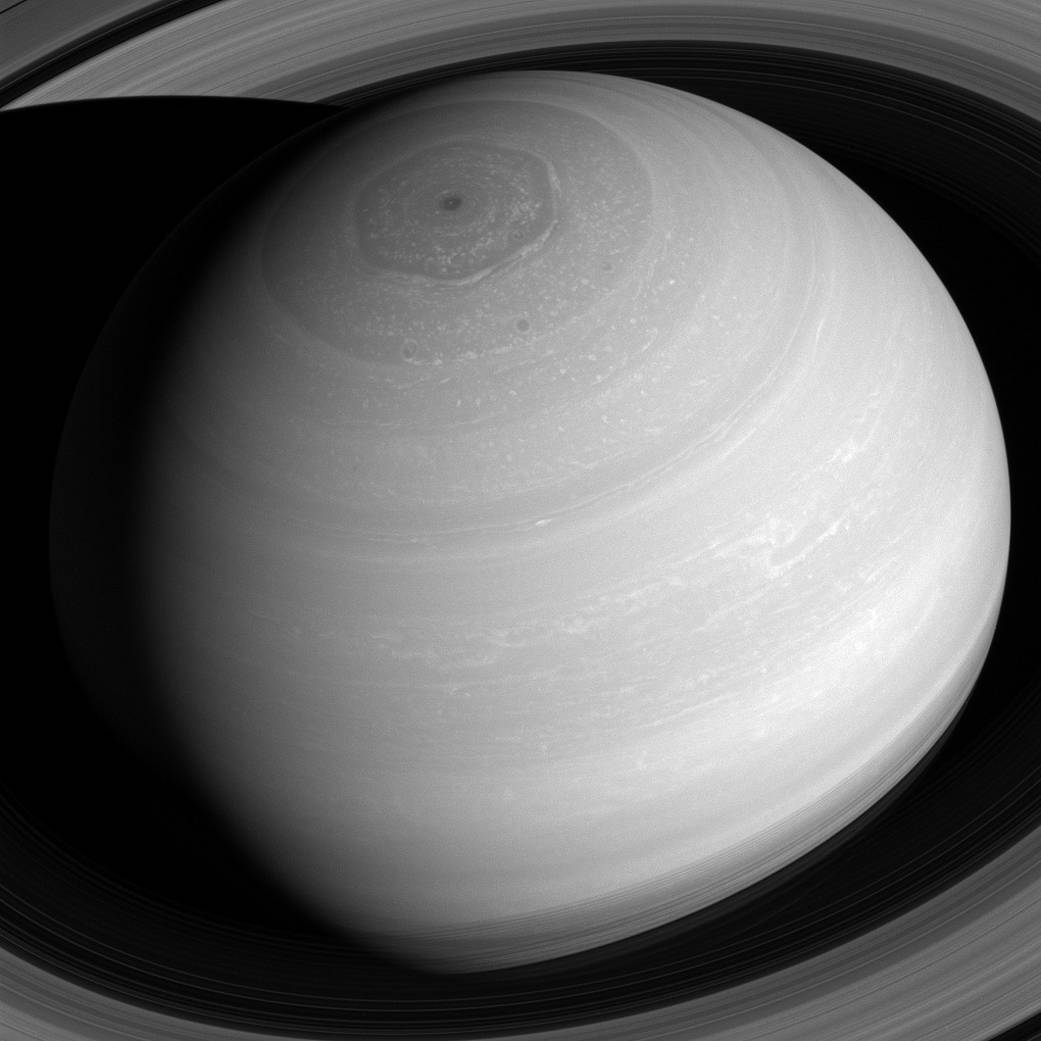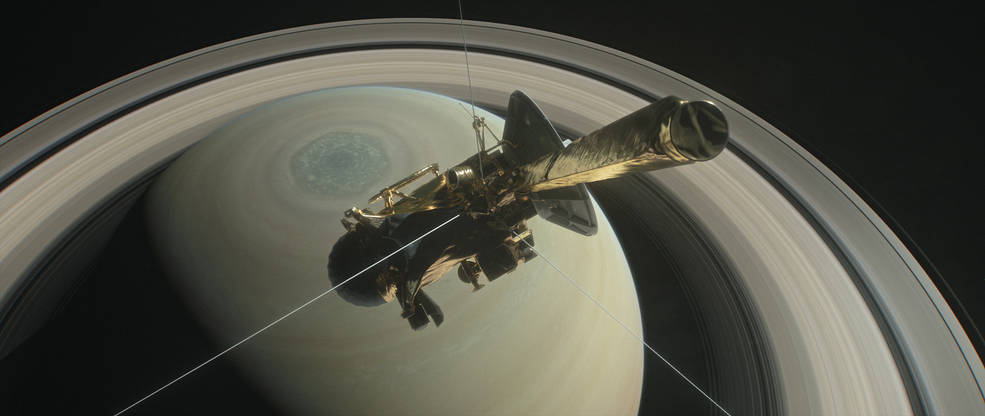オリジナル記事:Saturn’s icy moon Mimas is dwarfed by the planet’s enormous rings.
Because Mimas (near lower left) appears tiny by comparison, it might seem that the rings would be far more massive, but this is not the case. Scientists think the rings are no more than a few times as massive as Mimas, or perhaps just a fraction of Mimas’ mass. Cassini is expected to determine the mass of Saturn’s rings to within just a few hundredths of Mimas’ mass as the mission winds down by tracking radio signals from the spacecraft as it flies close to the rings.
The rings, which are made of small, icy particles spread over a vast area, are extremely thin – generally no thicker than the height of a house. Thus, despite their giant proportions, the rings contain a surprisingly small amount of material.
Mimas is 246 miles (396 kilometers) wide.
This view looks toward the sunlit side of the rings from about 6 degrees above the ring plane. The image was taken in red light with the Cassini spacecraft wide-angle camera on July 21, 2016.
The view was obtained at a distance of approximately 564,000 miles (907,000 kilometers) from Saturn and at a Sun-Saturn-spacecraft, or phase, angle of 31 degrees. Image scale is 34 miles (54 kilometers) per pixel.
The Cassini mission is a cooperative project of NASA, ESA (the European Space Agency) and the Italian Space Agency. The Jet Propulsion Laboratory, a division of the California Institute of Technology in Pasadena, manages the mission for NASA’s Science Mission Directorate, Washington. The Cassini orbiter and its two onboard cameras were designed, developed and assembled at JPL. The imaging operations center is based at the Space Science Institute in Boulder, Colorado.
For more information about the Cassini-Huygens mission visit http://saturn.jpl.nasa.gov and http://www.nasa.gov/cassini. The Cassini imaging team homepage is at http://ciclops.org.
Credit: NASA/JPL-Caltech/Space Science Institute
Last Updated: Nov. 29, 2016
Editor: Tony Greicius
土星の氷の衛星ミマスが土星の巨大な環によって小さく見えます
土星の環がはるかに大きく見えるため、土星の衛星ミマス(左下付近)が小さく見えるのですが、実際はそうではありません。科学者たちは、土星の環がミマスの数倍、あるいは同程度の質量さえもないと考えています。カッシーニは土星の環に接近して電波による測定を実施することで、土星の環の質量がミマスの数百分の一程度であることがわかると予想しています。
広大な領域に拡がっている小さな氷の粒子からできている土星の環は非常に薄く、一般的な家の高さもありません。したがって、土星の環は巨大な外見にもかかわらず、驚くほど少質量の材料で構成されているのです。
ミマスは直径246マイル(396キロメートル)です。
この画像は、土星の環の平面の約6度上から日光の当たっている面を見ています。 2016年7月21日にカッシーニ探査機搭載の広角カメラの赤色光で撮影されました。
この画像は、土星からおよそ564,000マイル(907,000キロメートル)の距離で、そして太陽 – 土星 – 探査機の位相が31°の角度で撮影されました。画像の解像度は1ピクセルあたり34マイル(54キロメートル)です。
訳者注:
土星の環の下に小さく点のように見える土星の衛星ミマス。
氷と少量の岩石で構成されるこのミマスの質量より、土星の環の全質量の方が少ないとは驚きです。
ちなみにこのミマス、スターウォーズの宇宙要塞「デス・スター」のモデルと言われていますが、ミマスの詳細がわかったのはスターウォーズの制作後なので誤った噂話です。
ミマス – Wiki
ミマス (Saturn I Mimas) は、土星の第1衛星。1789年に天文学者ウィリアム・ハーシェルによって発見された。
ミマスは半径18.6万kmのほぼ円軌道を約22時間40分ごとに一周する天体で、土星の主要な衛星の中では最も土星の近くにある。
